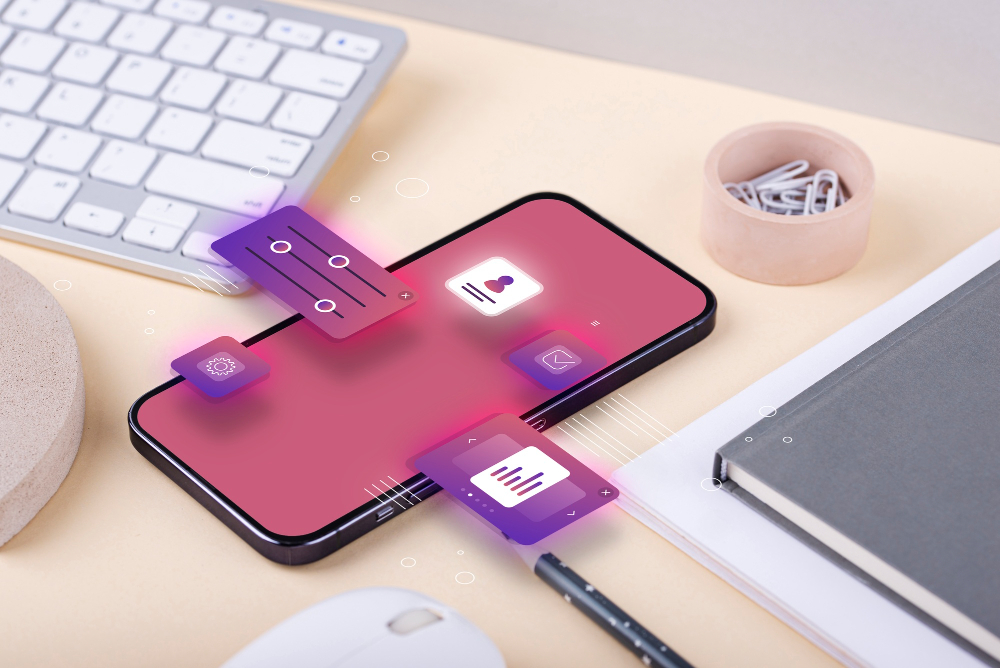Today’s digital landscape demands a focus on mobile optimisation. With more and more people using their mobile phones to search the net for information, it’s crucial to ensure your website is optimised for mobile users as well as desktop users. The way we access the internet has shifted dramatically. Mobile devices, being personal and convenient, have become the preferred way people search online. As a business owner, you ideally want to reach as many potential customers as possible by searching for the specific product or service you offer. By prioritizing mobile optimisation, you can ensure your website is readily accessible and user-friendly on any device, maximizing your chances of capturing their attention.
As per Statista, the worldwide stats on internet device usage show that mobile visitors reached an impressive 58.33% of global traffic in 2022. What this means is that most internet users are far more likely to be visiting your website on mobile phones than on desktops or laptops.
Table of Contents
ToggleWhat is Mobile Optimisation? Why is Mobile Optimisation Important?

When you aim at digital content that functions on any mobile device (other than the traditional desktop), you optimise the content. In other words, mobile optimisation is ensuring your digital content is oriented to function perfectly on any mobile device. Some sites like Amazon have seamless functionality and UX across platforms and devices. This is not an accident. It is the result of mobile optimisation. Mobile optimisation is important as it makes your website mobile-friendly, so mobile users can view, operate, and enjoy your website without a hitch. A mobile-optimised website goes a long way in elevating your screen presence online with enhanced user experience.
Tips for Mobile Optimisation – Best Practices to Know
To derive the best for your business, it is important that you keep in mind these tips to ensure a site with great mobile optimisation.
Responsive Web Design
Responsive web design or RWD means employing a web page layout that looks great on any device. Responsive Web Design is a design approach that aims to ensure that web pages work well on various screen sizes and render well in a range of resolutions.
Responsive web design works well for great usability too. It is an approach used to design for a multi-device web. In Responsive Web Design, you use HTML and CSS to shrink, enlarge, hide, resize, and/or move the content, so it looks great on any screen.
HTML is fluid or fundamentally responsive. When you employ only HTML and no CSS, and resize a window while creating a webpage, the browser will automatically reflow the text to fit into the viewport.
Responsive web design is a design approach that addresses a range of devices and device sizes. It enables automatic adaption to the screen, whether the content is viewed on a phone, tablet, television, or watch. Responsive web design is not a separate technology; rather, as mentioned earlier, it is an approach. It is a term that describes a set of best practices used to create a layout capable of responding to any device being used to view the content.
Fast Loading Speed
Optimise your page speed. Optimisation of your website’s speed is important as it ensures that when you grow and scale up, your website can easily handle all the increased traffic and content. The faster your website loads, the better the experience for your users.
This, in turn, is likely to lead to better engagement and higher conversion rates. Optimising website speed is a complex process involving strategic planning and decision-making through a website’s life cycle.
Ideally, your website should have the Optimal Website Speed The “optimal” speed for a website can depend on several factors, including the type of content in the website.
It is a flexible figure because it may depend on the expectations of its users. However, as a general guideline, it is recommended that a web page should load within 2-6 seconds.
Mobile-friendly Navigation
Mobile navigation refers to designing and implementing menus, controls, and interactions that enable users to navigate a digital product’s content and features. It takes into account the placement, visibility, and functionality of navigation elements, such as icons, menus, tabs, and gestures.
Well-designed navigation is mobile-friendly navigation that facilitates intuitive and effortless user interactions, allowing users to discover and access the desired content or functionality easily.
Conversely, poor navigation can cause confusion, frustration, and/or high bounce rates, resulting in a poor and extremely negative user experience and likely abandonment. You may enhance your website’s navigation prototyping with advanced UX design tools.
Streamlined Content
Also read: How to Create Landing Pages that Convert
Streamlining content creation makes use of optimisation and strategic organisation of the entire content production workflow. It involves eliminating unnecessary steps, removing redundancy, and creating a seamless process that makes the best use of resources and time.
Streaming content is giving rise to efficiency and this is more than just a time-saving tactic. It is a strategic approach that has a direct and positive effect on the quality and relevance of the content.
In this fast-paced digital landscape, it is no secret that the attention spans of users are dwindling fast. Here, efficient and streamlined content creation ensures timely delivery without compromising on quality.
The benefits of streamlined content are several. Increased productivity and faster turn-around times are the obvious ones. Streamlined content also fosters improved collaboration and resource allocation. It sets the stage for consistently high-quality content.
It also boosts creativity as it frees up time for ideation and permits frequent checks and analysis to see if the content produced aligns well with overarching marketing goals.
Optimise Forms and CTAs
You may have designed a great landing page for your sale or special offer. But you will still need to put out a form and CTA to convert your effort into leads. How your forms are designed, where they are placed, and the language used by way of CTA content, all go a long way in shaping user experience.
It becomes extremely important, therefore, to get all these right if you wish to optimise forms and CTAs and make them snappy.
There are some tried and tested tips for Form Conversion below
- Make your form headline a CTA
- Move your form above the fold
- Aim to include the right number of fields
- Let the required form fields be noticeable
- Hide fields previously completed
- Edit your Submit button to make it Innovative
- When choosing your CTA colour, do an A/B Test
- Take care to guarantee the privacy of your visitors
- Use the correct form layout
Test, Test, Test across Devices and Platforms
Test, Test, Test across Devices and Platforms – Test your website across different devices. These days, there are several automated cross-browser and responsiveness testing tools available that will carry out extensive automated responsiveness testing of your website. This step is essential as you want your website to not simply look great on multiple devices but work seamlessly as well to provide a happy user experience.
To sum up, in order to optimise your website for mobile users, here is your ready reckoner of key areas to keep your focus:
- Responsive Design: Ensure your site adapts to various screen sizes and orientations.
- Fast Loading Times: Optimise images, use efficient coding practices, and leverage caching to reduce load times.
- Simple Navigation: Implement a clean, intuitive layout with easy-to-tap buttons and menus.
- Readability: Use legible fonts and adequate spacing.
- Mobile-Friendly Content: Prioritise concise, scannable text and avoid heavy use of large media files.
- Testing: Regularly test your site on different devices to ensure a consistent experience.




